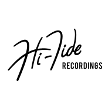Just curious about how you recording engineers compress / limit Bass guitars in your recordings. Do you just compress the master bus, mix to a guitar group, and compress the group, compress the track, or before the mixer, at the input?
—
sysmalakian:
TODAY IS MY BIRTHDAY!
303 days ago
dp:
dude
284 days ago
Bango_Rilla:
Shout Bananas!!
239 days ago
BillyBlastOff:
See you kiddies at the Convention!
223 days ago
GDW:
showman
174 days ago
Emilien03:
https://losg...
96 days ago
Pyronauts:
Happy Tanks-Kicking!!!
89 days ago
glennmagi:
CLAM SHACK guitar
75 days ago
Hothorseraddish:
surf music is amazing
55 days ago
dp:
get reverberated!
5 days ago
No polls at this time. Check out our past polls.
No contests at this time. Check out our past contests.
- 1st – GretschEastwood, Phredcheese, ToneWaveSteve
- 2nd – hokusai22, JurekMove, RareFenders19, smrybacki
- 3rd – 4pickupguy, JakeDobner, Man_or_astro_corey, surfbanned
- 4th – bottlenose, Don_Chiva213, Evildan, Supersonic60, TheBiegeTones
- 5th – headman, LOSKIN
- 6th – doclegume, ImGoodThanks, knucklesnuclear, Redfish1, Sandra
- 7th – daimonlog, JuniorJake, mojorowe, montecarlo71
- 8th – albo3, Gimlet, linalina, malibooz, Redeemed_wretch, ScottyC, SignalsFromSpace, swankycelebs
- 9th – etcexpo, Gilbys21, Lilbug76, Pablo_Surfonica, rkharper
- 10th – corkyjames, CoverHeaven, Matokira, OCBPcrew4, Readers_Wives
- 11th – mudhoney
- 12th – articlesreader
- 13th – ErkBerg, Kojack, pjmoto, WantedPISTOLERO
- 14th – EdgardoO, IvanEsquivel, Reverber, Wicht69
- 15th – CastleFreak, HeavySixer, krkla, Tater, Trendzzzone
- 16th – chipwich, Highway61, IceBlueJag62, playitcoolmusic
- 17th – gixxrider23, PASurfRocker
- 18th – silvanski, StickmanD, thinkmatic
- 19th – boatanchors, denchersakaeze, mathiasrock, mikesurf, RocketElvis, spyroid, Trippin5Victor, Twangdude
- 20th – CTScout, lennypoo, lljsullins, Psyfred, reznathoth, SP8CTRE, vivingerald
- 21st – TMo
- 22nd – adriannugraha, bassman47, Brinkman, chiediazanna, Fatstringer, fredifuri, nick123, Philinarium, squirrelabama
- 23rd – Daxs, overboard, Tarantula, Turnip
- 24th – billder99
- 25th – Draygore, Eljooe, harrietgibbs
- 26th – Caleb, neocaster, rbnumber88, SleepZZZ, surferjoemusic
- 27th – Slyboca
- 28th – erpearl, Phred
- 29th – Bernard





























